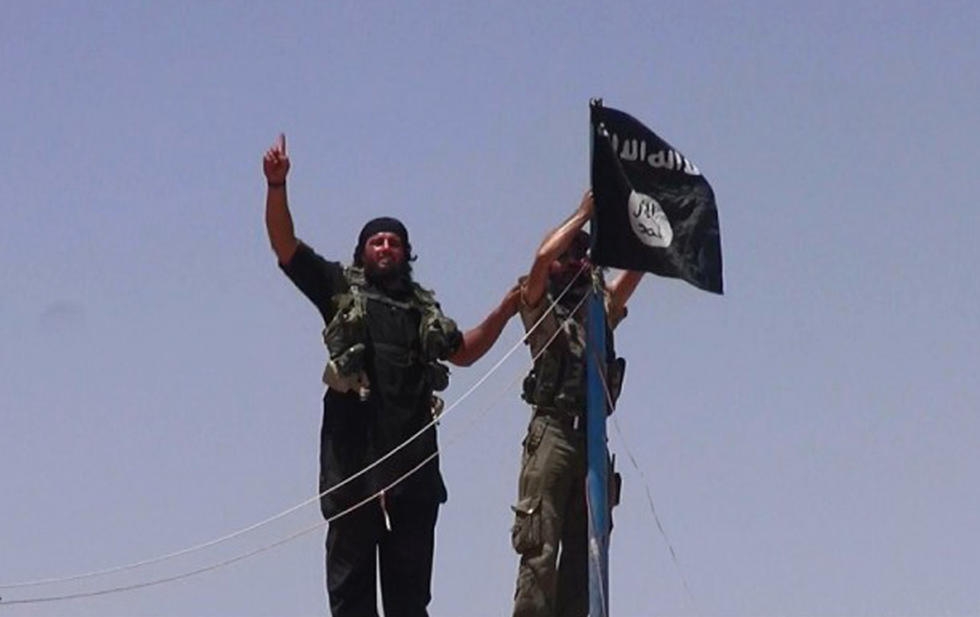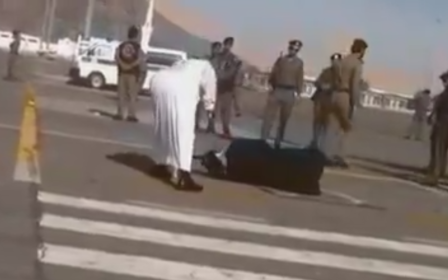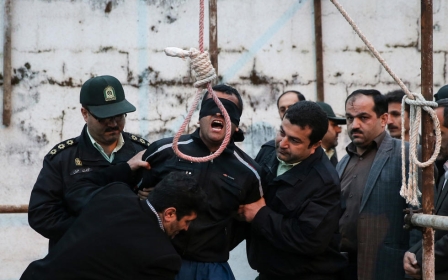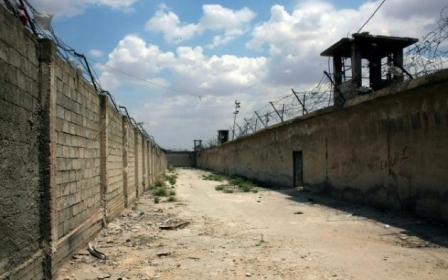'Irresponsible arms transfers' key factor in IS arsenal: Amnesty

The Islamic State (IS) group has captured much of its military arsenal from weapons supply points left throughout Iraq by Saddam Hussein prior to the 2003 US invasion, a report by Amnesty International indicated on Monday.
The data from the Amnesty report came from the results of a joint study between the rights group and Armament Research Services (ARES), an independent organisation specialising in arms and munitions-related topics.
The report, entitled "Taking Stock: The Arming of the Islamic State," revealed that IS has gained access to weapons from a plethora of sources, including from Turkey, several Gulf states and the US. The arsenel closely matches that which the Iraqi military built up via arms trade and transfer over the past five decades.
IS, along with other similar groups, have taken full advantage of the instability of Iraq since the US-led invasion of 2003 to capture huge quantities of armaments that have been stored in thousands of facilities dispersed throughout the country.
In anticipation of the US invasion in 2003, Saddam created “over 10,000 forward ammunition supply points … in schools, hospitals, mosques, fields and warehouses,” and “an unknown number of small dispersed weapons caches ... sewn throughout the Euphrates and Tigris river valleys”.
Many of these supply points have in recent years been looted by IS. War-crippled Iraq has become an emblematic case of the grave dangers of arms accumulation and proliferation and the irresponsible trade in weapons and munitions, the report said.
“IS fighters are now equipped with large stocks of mainly AK variant rifles, but also US military issue M16, Chinese CQ, German Heckler & Koch G3 and Belgian FN Herstal FAL-type rifles," the report said.
"Experts have also observed in the IS arsenal: Austrian Steyr and Russian Dragunov SVD sniper rifles; Russian, Chinese, Iraqi and Belgian machine guns; former Soviet Union/Yugoslav anti-tank missiles; and Russian, Chinese, Iranian and American artillery systems.
“In addition, IS has captured more sophisticated equipment, such as guided anti-tank missiles (Russian Kornet and Metis systems, Chinese HJ-8, and European MILAN and HOT missiles), and surface-to-air missiles (Chinese FN-6 MANPADS).”
Decades in the making
The report revealed that the heavy flow of arms became particularly apparent during the 1970s and 1980s when scores of countries led by Russia, France and China transferred billions of dollars’ worth of military equipment to Iraq. The Iran-Iraq war was in full swing and Iraqi forces were committing widespread violations of international human rights and humanitarian law.
Huge shipments of weapons were entering the country with no clear process in place to track where there weapons were stored, how they were used or whose hands they might be falling into.
The report also noted that from 2003 to 2007, the United States and other coalition members transferred more than a million infantry weapons and pistols with millions of rounds of ammunition to the Iraqi armed forces. This all took place while the army was poorly structured and disorganised. As a result, hundreds of thousands of weapons went missing.
John Holly, a former director of reconstruction logistics for the US-led Coalition Provisional Authority from 2003 to 2008, said the following about the faulty distribution of weaponry:
“The most fatal Shakespearean flaw was: There was no centralised database of what we had procured for the Iraqis. I was delivering weapons and ammunition to police stations through their back doors while they were having gunfights out the front door - and trying to get a receipt from the chief [Iraqi] officer, who was real enthusiastic about it, I can tell you.”
The report also said that the decade has seen successive Iraqi governments making large purchases of arms, starting with tens of thousands of small arms and ammunition from China and later from the US.
It said that more than 30 countries have supplied the Iraqi army with weapons - all while the Iraqi military was in complete disarray. In 2014, IS captured several key military bases in Iraq, looting exposed military stocks and sending another slew of weapons across the region, further fuelling the conflict.
The humanitarian cost
The Amnesty report also decried the toll on innocent civilians in Iraq, stating that not only has IS taken power over swathes of land and illegally acquired arms, but has grossly violated human rights and humanitarian law in the process.
It concluded by stressing the need for extreme caution and tracking with all future transfers of weapons to the region.
“Where there is a substantial risk that the arms will end up being used to commit or facilitate serious violations of international human rights or humanitarian law, the transfer must not take place. Where the transfer is deemed essential for the maintenance of peace and security, states must invest heavily in strengthening the military security forces’ capacity to uphold international human rights and humanitarian law, and bolster the full array of pre- and post-delivery arms controls and end-use monitoring.”
New MEE newsletter: Jerusalem Dispatch
Sign up to get the latest insights and analysis on Israel-Palestine, alongside Turkey Unpacked and other MEE newsletters
Middle East Eye delivers independent and unrivalled coverage and analysis of the Middle East, North Africa and beyond. To learn more about republishing this content and the associated fees, please fill out this form. More about MEE can be found here.




